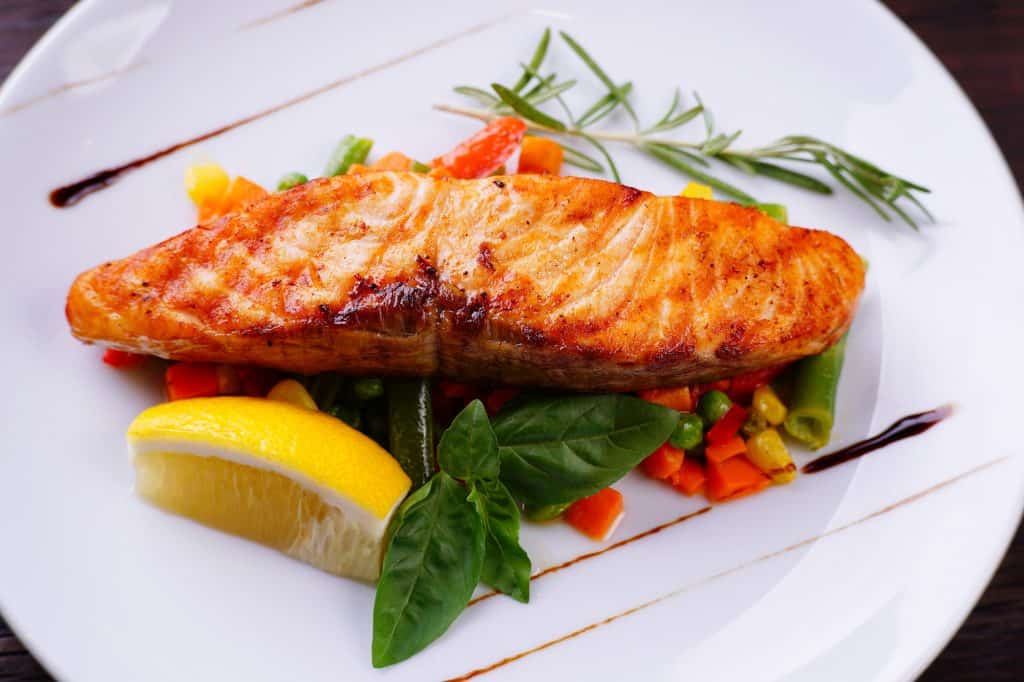Intermittent fasting is one of the hottest weight loss trends being followed today. There are many ways to lose weight, but intermittent fasting is one of the fastest ways to shed pounds.

No one wants to be on a diet for a long time, so the more quickly you can get the weight off the sooner you can live a healthier and leaner life.
What is Intermittent Fasting?
So, what is intermittent fasting? Intermittent fasting is not a food plan. It is a pattern of eating that cyles between periods of eating and periods of fasting.
Intermittent fasting does not tell you what to eat in the traditional sense. It is more about when you eat.
People often follow a pattern of intermittent fasting while following the keto diet or paleo diet.
What can you eat and drink while intermittent fasting? What you drink while intermittent fasting is important.
It is essential to avoid drinks that have sugar, artificial sweeteners and alcohol. These foods impact blood sugar levels.
Black coffee, plan water and unflavored tea are all great beverages for clean fasting.
This post may contain affiliate links. Please read our policies for more details.
How Much Weight Can You Lose While Intermittent Fasting?
Weight loss varies on all weight loss programs. Intermittent fasting is no different.
People report losing about a half pound per week with intermittent fasting, but a little more than 1.50 pounds per week with alternate-day fasting.
It is still going to come down to how many calories you consume each day.
Types of Intermittent Fasting

The 12 Hour a Day Fast
This is pretty much just what it says. You can eat during a 12 hour period and you will go without eating (or fast) during the other 12 hours of the day.
The 12 hour a day fast is a great option for fasting beginners. If you sleep 7 hours a day, you should easily be able to manage 12 hours of fasting if you wait a few hours to have breakfast and stop eating 3 hours before you go to bed.
Twelve-hour fasting will work for any diet plan of your choosing.
The 16 Hour a Day Fast
Want to get a little more aggressive with your fasting? With this method you have an 8 hour window to eat.
This plan is often referred to as the 16:8 method or the Leangains diet. If you have not seen benefits on the 12 hour fast, the 16:8 can be what you need to jumpstart your weight loss.
Noon to 8pm is the most common eating window for this type of fasting. Women may choose to limit their fasting window to 14 hours.
Protection from obesity and inflammation, diabetes, and liver disease are some of the benefits of the 16:8 intermittent fasting method.
The 2 Day Weekly Fast

This program is often referred to as the 5:2 diet. You eat a healthy diet for 5 days of the week and a reduced calorie diet for the other 2 days of the week.
During the 2 fasting days, men generally consume 600 calories and women 500 calories. The low-calorie eating days should be followed by at least one day of full-calorie eating.
This method of intermittent fasting has been shown to reduce insulin levels and improved insulin sensitivity.
Steady insulin levels reduce cravings and the temptation to binge on high carb or sugary foods.
The Alternate Day Fast
Want to try something a little more challenging in the world of fasting and weight loss? Alternate day fasting can help you lose a pound a week without a weight loss food plan.
This method is simple. You fast every other day. For some, that means no food at all. Others may choose to eat 500 calories on fasting days.
Individuals often choose to eat whatever they want on non-fasting days. Studies show this fasting method is effective for weight loss and heart health in both healthy and overweight adults.
The Eat-Stop-Eat Fast

This method is a complete fast for 1 or 2 days weekly for a 24 hour period. Calorie-free drinks, such as; water and tea are allowed on the fasting days.
Individuals return to normal eating on non-fasting days. This type of intermittent fasting may come with headaches, fatigue and irritability, but should become less extreme over time.
Less extreme Versions of this method are a 12 or 16 hour a day fast. The two day a week fast is also a good way to ease into the eat-stop-eat program because it does allow a small number of calories on fasting days.
The Meal Skipping Fast
The meal skip fasting method is one of the easier approaches to fasting and can be an ideal option for the fasting beginner.
This method is just what it says…skip a meal occasionally. Just because it is a traditional meal time does not mean that you have to eat if you are not hungry.
One of the healthiest ways to eat is to monitor your body’s indicators that it is hungry. Eat when you are hungry and if you are not hungry skip the meal.
There are whole books written about how to recognize physical hunger as opposed to emotional hunger. The meal skipping method is a great way to maintain a weight loss over the years.
The Warrior Diet
This method is for the more extreme dieter. The warrior diet consists of a 20 hour fast with a few servings of raw fruits or vegetables.
One large meal is eaten during the 4-hour non-fasting portion of the day. Vegetables, protein, healthy fats and carbohydrates should be included in your daily meal.
Eating only one large meal a day can make it difficult to get all the nutrients required daily, especially fiber.
Tips for Successful Intermittent Fasting

Of course, some of the intermittent fasting methods are going to be easier than others.
The methods that allow you to eat every day are going to be easier for beginners than the fasting alternatives that have days where less than 500 calories are consumed.
But you do not have to stick with one method. Fortunately, intermittent fasting can be customized to fit what works for you.
Here are some great tips for intermittent fasting success:
1. Stay hydrated. Stick with calorie-free drinks as you go through fasting days. Water and herbal teas are great choices for sticking with the program.
2. Plan your day. It may be difficult to keep your mind off of food on fasting days. Make a list of things you can do that will keep your mind off the fact that you are not eating regularly. You will get things done and keep your mind off wanting to eat.
3. Give yourself a break. Avoid strenuous exercise and activities. Yoga and stretching are light activities that can help get you through the day.

4. Make your calories count. Some fasting days do allow a small number of calories. Selecting foods that have protein, fiber and healthy fats will help you feel full longer and eliminate the possibility of blood sugar spikes.
Beans, lentils, eggs, fish, nuts, and avocado are great choices for nutrient-dense foods.
5. Choose high-volume foods. Foods with low calories and high volume will help you stay on track with your fasting. Popcorn, raw vegetables and fruits high in water content are choices that will work well for weight loss and fasting success.
6. Bump up the taste. Use herbs and spices to add flavor to your food. Spices and herbs tend to be low in calories and high in flavor. Eating a full flavored low-calorie meal can go a long way in avoiding the feeling of deprivation and can also keep you motivated.
7. Avoid processed foods. While many intermittent fasting plans do not get specific about what to eat, nutrient dense foods are best.
Healthy foods will prevent nutrient deficiencies and blood sugar spikes that can lead to bingeing or overeating. Weight loss and overall health results from a balanced diet.

Final Thoughts on Intermittent Fasting
Intermittent fasting is a great tool for losing weight. It can also be used as part of a healthy diet without weight loss. The benefits of using intermittent fasting are numerous. All methods give your digestive system a chance to rest and recover.
With intermittent fasting, there is a lot of flexibility. There are plans that allow you to eat almost anything. There are plans that allow you to eat every day.
Whether you choose paleo, keto, WW or any other well-known diet plan, you can still practice intermittent fasting. Maybe you are not on a diet at all. Intermittent fasting is a great way to maintain your weight and overall health.





